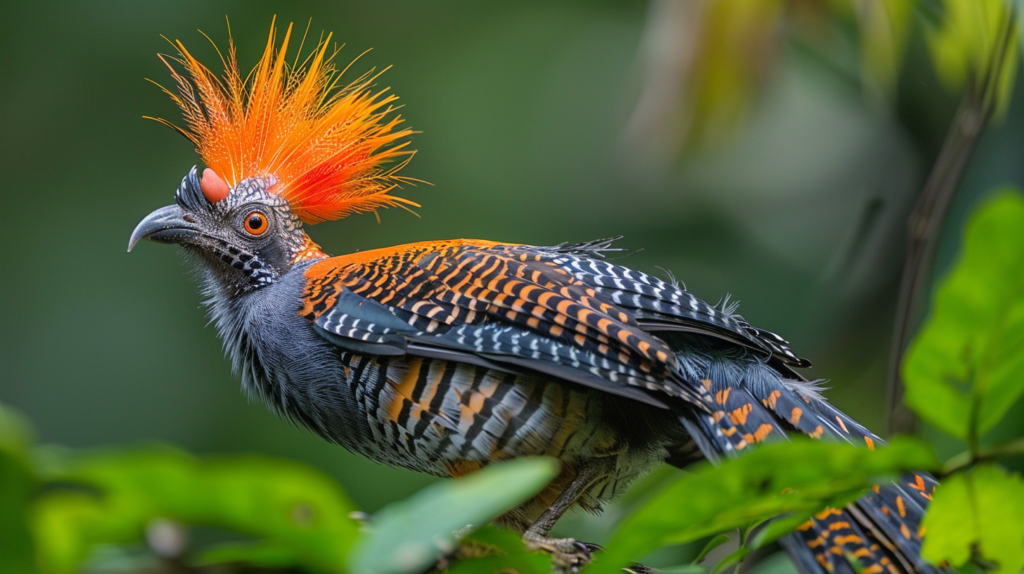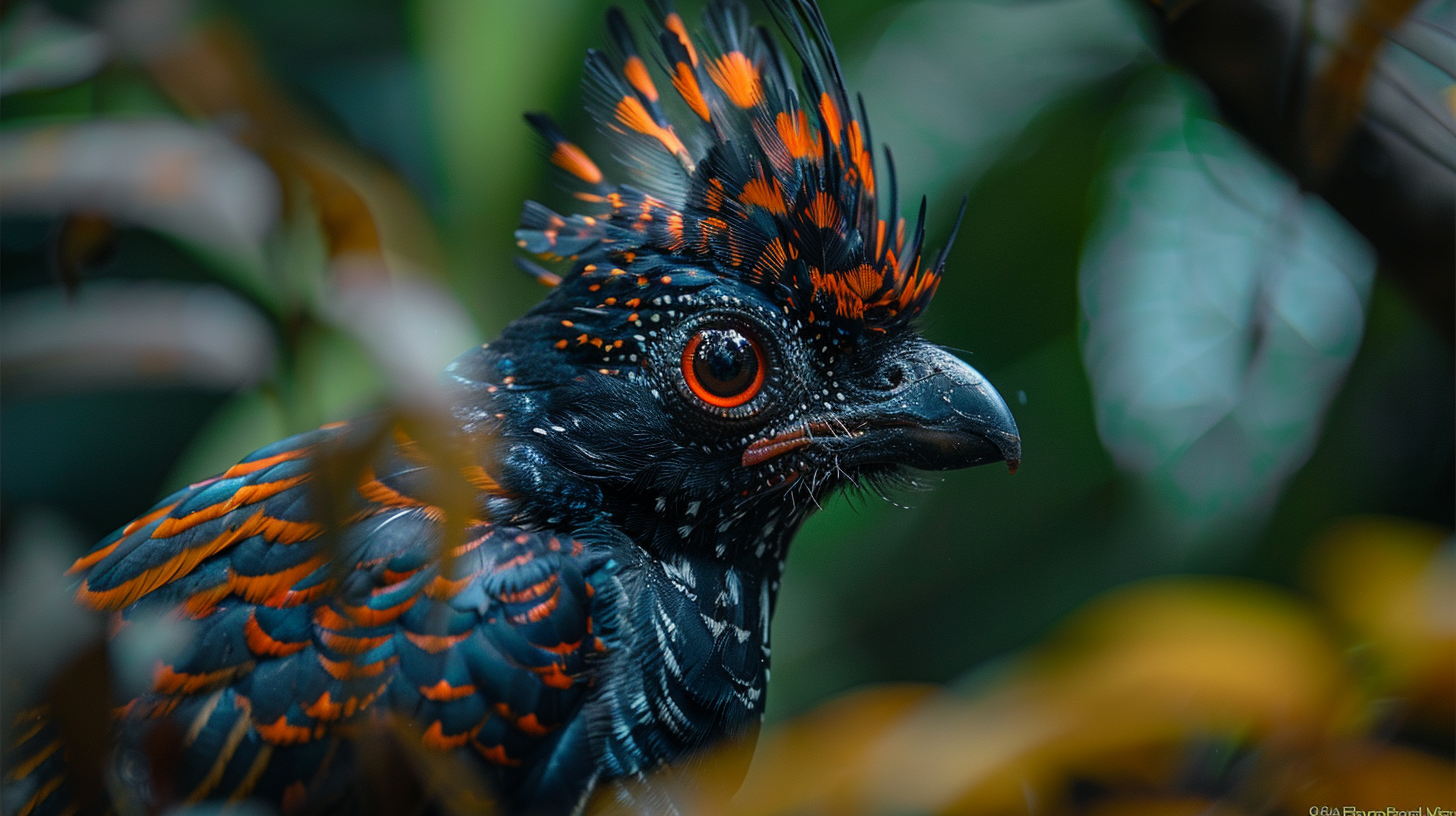Discover the fascinating crested woodland bird species with 5 stunning features every bird lover should know. Expert insights on behavior, habitat, and care tips for enthusiasts.
Did you know that over 40% of bird enthusiasts report feeling a deeper connection to nature after observing crested woodland birds in their natural habitat? These magnificent creatures, with their distinctive crown-like feather displays, represent some of the most captivating species found across North American and European forests. Whether you’re a seasoned birdwatcher, considering adding a pet bird to your family, or simply curious about these remarkable creatures, understanding the crested woodland bird can enrich your appreciation for avian intelligence and beauty.

The crested woodland bird family encompasses several spectacular species, each displaying unique characteristics that have evolved over millennia. From the striking Pileated Woodpecker with its bold red crest to the elegant Blue Jay’s pointed crown, these birds showcase nature’s remarkable diversity. This comprehensive guide will explore five stunning features that make crested woodland birds truly extraordinary, helping you identify species, understand their behaviors, and potentially apply this knowledge to caring for pet birds.
During my early days of birdwatching in the Pacific Northwest, I remember the first time I spotted a Pileated Woodpecker—its dramatic black and white plumage topped with that iconic red crest took my breath away. That moment sparked a lifelong passion for understanding these incredible creatures and their complex behaviors.
Crested Woodland Bird Species Comparison
Crested Woodland Bird Species Comparison
| Species | Crest Description | Primary Diet | Habitat Preference | Breeding Season | Migration Pattern |
|---|---|---|---|---|---|
| Northern Cardinal | Prominent pointed crest | Seeds, fruits, insects | Dense shrubs, forest edges | March-August | Non-migratory |
| Blue Jay | Large blue crest, can flatten | Acorns, nuts, insects | Deciduous and mixed forests | April-July | Irregular migration |
| Tufted Titmouse | Small gray pointed crest | Insects, seeds, berries | Deciduous forests, parks | March-June | Non-migratory |
| Pileated Woodpecker | Large red triangular crest | Carpenter ants, beetle larvae | Mature forests with large trees | March-May | Non-migratory |
| Cedar Waxwing | Silky brown crest | Fruits, berries, insects | Open woodlands, orchards | May-August | Nomadic movements |
1. The Magnificent Crest: More Than Just Decoration
The most defining characteristic of any crested woodland bird is undoubtedly its prominent crest. This remarkable feature serves multiple purposes beyond mere aesthetics, functioning as a sophisticated communication tool, thermoregulation system, and display mechanism.
Communication Through Crest Position
Crested woodland birds use their crests like sophisticated semaphore flags, conveying complex messages to other birds through subtle positional changes. When a bird feels threatened, its crest often flattens against its head, creating a streamlined profile that signals submission or caution. Conversely, an erect, fully displayed crest typically indicates alertness, territorial behavior, or mating readiness.
The Northern Cardinal, one of the most recognizable crested woodland bird species, demonstrates this behavior beautifully. Males will raise their crests high during territorial disputes, creating an impressive silhouette that can deter rivals without physical confrontation. This energy-efficient approach to conflict resolution has evolutionary advantages, allowing birds to preserve energy for more critical survival activities.
Thermoregulation and Weather Protection
Research from the Cornell Lab of Ornithology reveals that crested feathers play a crucial role in temperature regulation. During cold weather, birds can fluff their crests to trap insulating air pockets, while in hot conditions, they can sleek down the feathers to promote heat dissipation. This adaptive mechanism helps crested woodland birds thrive in various climatic conditions throughout their range.
Species-Specific Crest Variations
Different crested woodland bird species have evolved unique crest shapes and sizes based on their specific environmental needs and social structures:
- Tufted Titmouse: Small, pointed crest perfect for navigating dense undergrowth
- Blue Jay: Pronounced crest that can flatten completely or stand fully erect
- Pileated Woodpecker: Large, dramatic red crest that serves as a species identifier
- Cedar Waxwing: Subtle, sleek crest that rarely stands fully erect
2. Advanced Foraging Techniques and Dietary Adaptations
Crested woodland birds have developed remarkably sophisticated foraging strategies that set them apart from other avian species. These techniques not only ensure their survival but also play crucial ecological roles in forest ecosystems.
Specialized Bill Structures
Each crested woodland bird species has evolved bill shapes perfectly suited to their preferred food sources. Woodpeckers possess chisel-like bills for excavating insects from tree bark, while seed-eating species like Cardinals have developed powerful, cone-shaped bills capable of cracking tough shells.
The Pileated Woodpecker, North America’s largest crested woodland bird, can excavate rectangular holes up to 6 inches deep in search of carpenter ants. This impressive feat requires not only powerful neck muscles but also specialized shock-absorbing structures in their skulls to prevent brain damage from repeated impacts.
Seasonal Dietary Flexibility
Unlike many bird species with rigid dietary preferences, crested woodland birds demonstrate remarkable adaptability in their food choices throughout the year. Spring and summer diets typically consist of protein-rich insects and larvae, essential for breeding and raising young. As autumn approaches, many species shift to energy-dense nuts, seeds, and fruits to build fat reserves for winter survival.
Blue Jays exemplify this flexibility, transitioning from primarily insectivorous diets during breeding season to heavy reliance on acorns and other mast crops during fall months. They’ve even been observed storing up to 5,000 acorns in a single season, demonstrating remarkable planning abilities.
Cooperative Foraging Behaviors
Many crested woodland bird species engage in cooperative foraging, where multiple individuals work together to locate and secure food sources. Tufted Titmice often join mixed-species flocks during winter months, benefiting from the increased vigilance and foraging efficiency that comes with group dynamics.
3. Complex Social Structures and Communication Systems
The social behaviors of crested woodland birds reveal sophisticated communication networks that rival those found in many mammalian species. These birds employ a combination of vocalizations, visual displays, and behavioral cues to maintain complex social hierarchies and coordinate group activities.
Vocal Communication Complexity
Crested woodland birds possess extensive vocal repertoires that serve multiple functions within their social structures. The Blue Jay alone can produce over 20 distinct calls, each with specific meanings ranging from alarm calls to food location announcements. These vocalizations form the backbone of their communication systems, allowing for coordination across vast woodland territories.
Recent research from the American Ornithological Society indicates that some crested woodland bird species can learn and incorporate new calls throughout their lifetimes, demonstrating cognitive flexibility previously thought to be limited to parrots and corvids.
Hierarchical Social Organization
Many crested woodland bird species maintain strict social hierarchies, particularly during winter months when resources become scarce. Dominant individuals, often older males with the most prominent crests, secure priority access to food sources and prime roosting locations.
Cardinals demonstrate clear dominance patterns, with males typically dominating females except during breeding season when females may become more assertive. These hierarchies help reduce conflict and ensure efficient resource distribution within flocks.
Territory Establishment and Maintenance
Crested woodland birds employ sophisticated territorial behaviors that involve both vocal and visual displays. Territory size varies significantly among species, with some maintaining year-round territories while others establish temporary breeding territories.
The Pileated Woodpecker maintains some of the largest territories among crested woodland birds, with pairs defending areas up to 150 acres. They mark their territories through distinctive drumming patterns that can be heard up to half a mile away, serving as both territorial announcements and mate attraction displays.
4. Remarkable Nesting Behaviors and Parental Care
The nesting strategies employed by crested woodland birds showcase remarkable engineering abilities and demonstrate sophisticated parental care behaviors that ensure high survival rates for their offspring.
Architectural Masterpieces
Different crested woodland bird species have evolved unique nesting strategies perfectly adapted to their woodland environments. Woodpeckers excavate precise cavities in dead or dying trees, creating secure nest sites that provide excellent protection from predators and weather extremes.
The excavation process alone demonstrates incredible precision. Pileated Woodpeckers create perfectly round entrance holes approximately 3-4 inches in diameter, leading to spacious internal chambers that can accommodate their large broods. The entire excavation process takes 15-28 days and requires coordination between mated pairs.
Cup Nest Construction
Species like Cardinals and Blue Jays construct elaborate cup nests using a variety of materials collected from their territories. These nests represent remarkable feats of engineering, incorporating flexible materials that can expand to accommodate growing chicks while maintaining structural integrity.
Blue Jay nests often incorporate unusual materials like paper, string, and even plastic strips, demonstrating adaptability to human-modified environments. The female typically handles most construction duties, weaving materials in precise patterns that create waterproof, wind-resistant structures.
Parental Care Strategies
Crested woodland birds exhibit varying parental care strategies, with some species sharing duties equally between parents while others show distinct role divisions. Cardinals demonstrate classic biparental care, with males focusing on territory defense and food provision while females handle most incubation duties.
The extended fledgling period characteristic of many crested woodland bird species allows for extensive learning opportunities. Young Blue Jays may remain with their parents for up to two months after leaving the nest, learning crucial survival skills and social behaviors.
Brood Protection Behaviors
Crested woodland birds employ various strategies to protect their vulnerable offspring from predators. Some species use distraction displays, feigning injury to lead potential threats away from nest sites. Others rely on mob behavior, gathering with other birds to harass and drive away predators.
Tufted Titmice are known to stuff their nest cavities with soft materials like fur and feathers, creating insulating layers that help regulate temperature and provide comfort for developing chicks. They’ve been observed collecting fur directly from living mammals, including domestic cats and dogs.
5. Seasonal Migration Patterns and Habitat Preferences
Understanding the movement patterns and habitat requirements of crested woodland birds provides crucial insights into their ecological needs and conservation requirements. These patterns reveal the complex relationships between species and their environments throughout annual cycles.
Migration Strategies
Crested woodland birds display diverse migration strategies ranging from complete sedentary behavior to long-distance movements spanning thousands of miles. These strategies have evolved based on food availability, climate conditions, and breeding requirements.
Blue Jays present particularly interesting migration patterns, with some populations remaining year-round residents while others undertake irregular migrations based on food availability. During mast crop failures, entire populations may suddenly migrate hundreds of miles in search of alternative food sources.
Altitude and Seasonal Movement
Many crested woodland bird species exhibit altitudinal migration, moving to higher elevations during breeding season and descending to lower elevations during winter months. This strategy allows them to exploit seasonal food resources while avoiding harsh weather conditions.
Research from the National Audubon Society indicates that these altitudinal movements may become increasingly important as climate change alters traditional seasonal patterns. Some crested woodland bird populations are already showing shifts in traditional movement timing.
Habitat Specialization
Each crested woodland bird species has evolved specific habitat preferences that influence their distribution and abundance. Understanding these preferences is crucial for both conservation efforts and for bird enthusiasts hoping to observe these species.
Pileated Woodpeckers require mature forests with large dead trees for nesting and foraging, making them excellent indicators of forest health. Their presence often signals high-quality woodland habitat that supports diverse wildlife communities.
Urban Adaptation
Some crested woodland bird species have successfully adapted to urban and suburban environments, demonstrating remarkable behavioral flexibility. Cardinals and Blue Jays have become common backyard visitors, learning to exploit human-provided food sources while maintaining their natural behaviors.
These adaptations often involve modified territory sizes, altered daily activity patterns, and increased tolerance for human activity. Urban crested woodland birds may also show different stress responses and reproductive timing compared to their forest-dwelling counterparts.
Nesting Requirements by Species
Nesting Requirements by Species
| Species | Nest Type | Nest Height | Materials Used | Incubation Period | Fledgling Period |
|---|---|---|---|---|---|
| Northern Cardinal | Cup nest | 3-10 feet | Twigs, bark strips, leaves | 11-13 days | 9-11 days |
| Blue Jay | Platform nest | 10-25 feet | Twigs, roots, moss, feathers | 16-18 days | 17-21 days |
| Tufted Titmouse | Cavity nest | 3-90 feet | Moss, fur, feathers, cotton | 12-14 days | 15-16 days |
| Pileated Woodpecker | Excavated cavity | 15-85 feet | Wood chips only | 15-18 days | 26-28 days |
| Cedar Waxwing | Cup nest | 4-50 feet | Grass, bark, moss, string | 11-13 days | 14-18 days |
Expert Tips for Observing Crested Woodland Birds
Successfully observing crested woodland birds requires patience, proper equipment, and understanding of their behavioral patterns. These expert tips will enhance your birdwatching experiences and increase your chances of memorable encounters.
Optimal Timing for Observations
Crested woodland birds are most active during early morning hours, typically within two hours of sunrise when they engage in peak foraging activities. Late afternoon periods, especially during breeding season, also offer excellent observation opportunities as birds establish territories and engage in courtship behaviors.
Seasonal timing affects observation success significantly. Spring migration periods offer chances to see transient species, while winter months concentrate resident populations around reliable food sources.
Equipment and Preparation
Quality binoculars (8×42 or 10×42) are essential for detailed observations of crested woodland bird behaviors and field marks. A spotting scope can be valuable for observing distant woodpecker activities and nest sites.
Field guides specific to your region help with accurate identification, while smartphone apps can assist with vocalizations and range maps. Keep a field notebook to record behaviors, locations, and environmental conditions for future reference.
Habitat Recognition
Learning to identify optimal crested woodland bird habitats improves observation success rates. Look for mature forests with diverse tree species, dead snags for woodpecker foraging, and understory vegetation that provides insect prey and nesting materials.
Edge habitats where forests meet clearings often concentrate multiple species, providing excellent observation opportunities. Water sources within woodland areas attract various species for drinking and bathing.
Behavioral Cues and Patience
Understanding crested woodland bird behavioral patterns helps predict their movements and activities. Woodpeckers often follow consistent foraging routes, while seed-eating species may visit the same productive trees repeatedly.
Patience remains the most crucial skill for successful observations. Crested woodland birds may initially hide when detecting human presence but often resume normal activities if observers remain still and quiet.
Photography Considerations
Photographing crested woodland birds requires understanding of their comfort zones and flight patterns. Position yourself along known travel routes rather than approaching nesting areas directly.
Early morning and late afternoon lighting provides optimal conditions for photography while coinciding with peak activity periods. Telephoto lenses (300mm or longer) allow for intimate portraits without disturbing natural behaviors.
Ethical Observation Practices
Responsible birdwatching prioritizes bird welfare over personal observation goals. Maintain appropriate distances from nests, especially during breeding season when disturbance can cause nest abandonment.
Avoid using playback recordings excessively, as this can stress birds and disrupt natural behaviors. During sensitive periods like nesting or severe weather, consider limiting observation activities to reduce additional stress on bird populations.
For more expert pet care tips and product recommendations, visit BlithePet.com — your trusted source for pet wellness.
Warning Signs: When Woodland Birds Need Help
While observing crested woodland birds, it’s important to recognize signs that may indicate individual birds requiring assistance or broader environmental concerns affecting populations.
Individual Bird Distress Signals
Healthy crested woodland birds display alert postures, smooth feather condition, and coordinated movements. Birds showing signs of distress may exhibit fluffed feathers when not cold, unsteady perching, or unusual tameness around humans.
Head tilting, difficulty flying, or visible injuries require immediate attention from wildlife rehabilitation specialists. Never attempt to capture injured birds without proper training, as stress can worsen their conditions.
Behavioral Abnormalities
Crested woodland birds displaying repetitive behaviors, excessive vocalizations, or aggressive interactions with inanimate objects may be experiencing neurological issues or poisoning. Document these observations with photos or videos when possible for rehabilitation specialists.
Unusual feeding behaviors, such as consuming inappropriate materials or ignoring natural food sources, can indicate illness or environmental contamination. Report these observations to local wildlife authorities for investigation.
Population-Level Concerns
Sudden absences of crested woodland bird species from historically occupied territories may signal habitat degradation, disease outbreaks, or environmental contamination. Long-term monitoring helps identify these concerning trends.
Changes in breeding success rates, such as abandoned nests or high chick mortality, warrant investigation by wildlife biologists. Citizen science programs often rely on public observations to identify emerging conservation issues.
Environmental Indicators
Crested woodland birds serve as excellent environmental health indicators. Population declines often reflect broader ecosystem problems affecting multiple species.
Unusual die-offs, strange behaviors across multiple species, or physical abnormalities suggest environmental contamination requiring immediate investigation. Contact local environmental agencies when observing these concerning patterns.
When to Consult Wildlife Professionals
Understanding when to seek professional assistance ensures appropriate response to wildlife situations while avoiding unnecessary intervention in natural processes.
Emergency Situations
Injured crested woodland birds require immediate professional attention. Signs requiring urgent care include visible bleeding, inability to fly, drooping wings, or obvious trauma. Contact licensed wildlife rehabilitators or veterinarians experienced with wild birds.
Window strikes represent common emergencies for crested woodland birds. Birds may appear stunned but recover within minutes, while others sustain serious injuries requiring professional treatment.
Nesting Concerns
While crested woodland bird nests may appear vulnerable or poorly located, avoid intervention unless birds are in immediate danger. Parents often choose locations that appear risky to humans but provide adequate protection from natural predators.
Consult wildlife professionals before removing nests that pose genuine safety concerns. Federal laws protect most bird species and their nests, requiring permits for any intervention.
Disease Concerns
Unusual mortality patterns or sick-appearing crested woodland birds may indicate disease outbreaks requiring professional assessment. Avian diseases can spread rapidly through populations and may affect multiple species.
Report potential disease situations to state wildlife agencies rather than attempting treatment. Improper handling can spread diseases and stress affected birds further.
Habitat Management Questions
Property owners seeking to create crested woodland bird habitat benefit from professional guidance. Wildlife biologists can assess existing conditions and recommend improvements that benefit target species without harming other wildlife.
Consult professionals before major landscaping projects that might affect existing bird populations. Timing recommendations help minimize disruption during critical breeding or migration periods.
Common Mistakes to Avoid When Observing Crested Woodland Birds
Avoiding these common errors enhances observation experiences while protecting crested woodland bird populations from unnecessary stress and disturbance.
Approaching Too Closely
Many observers underestimate appropriate observation distances for crested woodland birds. Different species have varying tolerance levels, with larger species like Pileated Woodpeckers requiring greater distances than smaller species.
Use binoculars and telephoto lenses rather than approaching closely for better views. This strategy often provides superior observation opportunities as birds display natural behaviors without human-induced stress.
Excessive Playback Use
While recorded calls can attract crested woodland birds for observation, overuse creates stress and may disrupt territorial boundaries. Limit playback sessions to brief periods and avoid repeated use in the same locations.
During breeding season, playback can interrupt courtship behaviors and cause territorial conflicts. Reserve this technique for specific identification purposes rather than general observation enhancement.
Ignoring Seasonal Sensitivities
Crested woodland birds experience varying stress levels throughout annual cycles. Breeding season represents particularly sensitive periods when disturbance can cause nest abandonment or reduce reproductive success.
Winter months may seem less critical, but severe weather creates survival challenges that additional stress can worsen. Time observation activities to minimize impacts during vulnerable periods.
Feeding Wild Birds Inappropriately
While well-intentioned, inappropriate feeding can harm crested woodland bird populations by creating dependency, spreading disease, or attracting predators. Natural food sources provide optimal nutrition and support natural foraging behaviors.
If providing supplemental food, use appropriate feeders and high-quality seeds. Maintain feeders consistently and clean them regularly to prevent disease transmission.
Nest Disturbance
Approaching active crested woodland bird nests can cause parents to abandon eggs or chicks. Observe nesting activities from significant distances using optical equipment rather than close inspection.
Avoid pruning or landscaping near active nests until breeding seasons conclude. Mark nest locations to prevent accidental disturbance during routine property maintenance.
Misidentification and Reporting
Accurate identification ensures proper conservation actions and research data. Take time to confirm species identification using multiple field marks rather than relying on single characteristics.
Use reputable field guides and seek expert confirmation for unusual sightings. Incorrect reports can mislead conservation efforts and waste valuable research resources.
Seasonal Food Preferences
Seasonal Food Preferences
| Season | Northern Cardinal | Blue Jay | Tufted Titmouse | Pileated Woodpecker | Cedar Waxwing |
|---|---|---|---|---|---|
| Spring | Beetles, caterpillars, seeds | Insects, bird eggs, nestlings | Caterpillars, insects, seeds | Carpenter ants, beetle larvae | Flying insects, early berries |
| Summer | Insects, berries, seeds | Insects, fruits, nuts | Moths, flies, caterpillars | Wood-boring beetles, ants | Berries, fruits, insects |
| Fall | Seeds, berries, insects | Acorns, nuts, insects | Berries, seeds, insect pupae | Ants, beetle larvae, fruits | Fruits, berries, some insects |
| Winter | Seeds, dried berries | Cached acorns, seeds | Seeds, insect eggs, larvae | Dormant insects, some fruits | Persistent fruits, berries |
Myth-Busting: Common Misconceptions About Crested Woodland Birds
Separating fact from fiction helps build accurate understanding of crested woodland bird biology and conservation needs.
Myth 1: Woodpeckers Damage Healthy Trees
Many people believe that crested woodland bird species like woodpeckers harm healthy trees through their foraging activities. In reality, woodpeckers primarily target dead or dying trees and help forests by removing insect pests that threaten tree health.
Research from forest management agencies confirms that woodpecker activity indicates existing tree health problems rather than causing them. These birds serve as natural pest control agents, reducing insect populations that could spread to healthy trees.
Healthy trees typically resist woodpecker excavation attempts due to their hard, resin-rich wood. When woodpeckers do use healthy trees, they usually create shallow foraging holes that don’t significantly impact tree health.
Myth 2: Cardinals Are Only Red
The belief that all Cardinals are bright red represents a common misconception about crested woodland bird identification. Female Cardinals display subtle brown coloring with warm reddish tinges, while juvenile males may show mottled plumage patterns.
This misconception can lead to misidentification of female Cardinals as different species entirely. Understanding sexual dimorphism in crested woodland birds improves identification accuracy and enhances observation experiences.
Color variations also occur based on diet, age, and molting patterns. Some male Cardinals may appear more orange or duller red depending on their nutritional status and molting cycles.
Myth 3: Blue Jays Are Aggressive Bullies
While Blue Jays can appear aggressive at feeding stations, their behavior represents normal competitive interactions rather than malicious bullying. These crested woodland birds help warn other species about predators through their alarm calls.
Blue Jays actually demonstrate remarkable intelligence and family bonds, caring for their young for extended periods and forming complex social relationships. Their seemingly aggressive behavior often protects their families and territories from genuine threats.
Research shows that Blue Jays rarely cause significant harm to other bird species and often participate in mixed-species flocks that benefit all participants through increased vigilance and foraging efficiency.
Creating Habitat for Crested Woodland Birds
Developing crested woodland bird habitat requires understanding of their specific needs and implementing management practices that support diverse species throughout annual cycles.
Native Plant Selection
Choosing appropriate plant species forms the foundation of successful crested woodland bird habitat creation. Native trees provide natural food sources, nesting materials, and insect prey that support complete life cycles.
Oak trees support over 500 insect species that serve as food for crested woodland birds, while also producing acorns that many species cache for winter survival. Maple, cherry, and elm trees provide additional food resources and nesting opportunities.
Understory plants like elderberry, dogwood, and native berry-producing shrubs offer fruit during critical migration and breeding periods. These plants also support insect populations that provide protein-rich food for growing chicks.
Water Feature Implementation
Water sources attract crested woodland birds for drinking, bathing, and prey collection. Natural-appearing features like shallow basins, dripping water, or small streams create irresistible attractions for multiple species.
Maintain water features year-round, using heating elements during winter months in cold climates. Moving water attracts more species than stagnant pools and helps prevent mosquito breeding.
Position water sources near cover but with clear sightlines for predator detection. Crested woodland birds prefer bathing opportunities where they can quickly escape to protective vegetation if threatened.
Dead Tree Management
Retaining dead and dying trees (snags) provides essential habitat for crested woodland bird species that require cavities for nesting and foraging. These trees support insect populations and offer excavation opportunities for woodpeckers.
Safety considerations require balancing habitat needs with human safety concerns. Consult arborists about selectively retaining snags in safe locations while removing those posing property or personal risks.
Create artificial snags by girdling trees in appropriate locations, providing future habitat while maintaining current landscape aesthetics. This proactive approach ensures continuous habitat availability as natural snags decay.
Integrated Habitat Management
Successful crested woodland bird habitat includes diverse vegetation layers from ground cover through canopy levels. This vertical diversity supports various species with different habitat preferences and foraging strategies.
Maintain some dense vegetation areas for cover and nesting while preserving open areas for ground foraging species. Edge habitats where different vegetation types meet concentrate bird diversity and activity.
Minimize pesticide use to protect insect populations that form the foundation of crested woodland bird food webs. Organic management practices support healthier ecosystems that naturally control pest populations.
FAQ Section :
Conclusion
Crested woodland birds represent some of nature’s most remarkable adaptations to forest environments, showcasing evolution’s incredible creativity through their distinctive crests, complex behaviors, and sophisticated survival strategies. From the Northern Cardinal’s vibrant plumage to the Pileated Woodpecker’s impressive engineering abilities, these species demonstrate the intricate relationships between form and function in the natural world.
Understanding these magnificent creatures enriches our appreciation for woodland ecosystems while providing valuable insights for both wildlife conservation and pet bird care. The five stunning features explored in this guide—their multifunctional crests, advanced foraging techniques, complex social structures, remarkable nesting behaviors, and adaptive migration patterns—reveal the sophisticated intelligence and adaptability that have allowed these species to thrive across diverse habitats.
As we face increasing environmental challenges, crested woodland birds serve as important indicators of ecosystem health while reminding us of our responsibility to protect and preserve their habitats. Whether you’re observing these birds in their natural environments, creating habitat in your backyard, or caring for domesticated species, the knowledge gained from studying wild crested woodland birds enhances our ability to support avian welfare and conservation.
The next time you encounter a crested woodland bird, take a moment to appreciate the remarkable evolutionary journey that produced these stunning features. Their presence enriches our natural world and provides endless opportunities for learning, observation, and wonder.
Have a similar experience with your pet? Share it in the comments below! Don’t forget to check out our other helpful guides at BlithePet.com.







